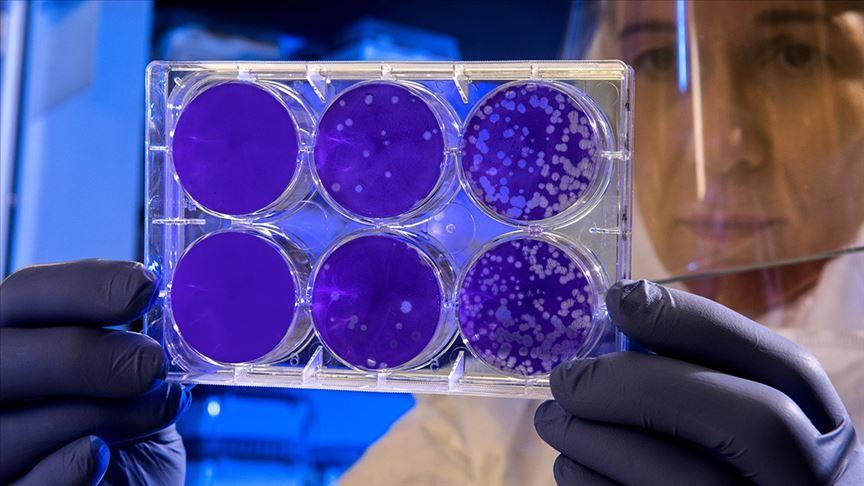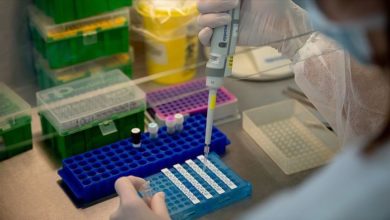
Hantavirus, unlike COVID-19, is not a new type of virus and will not trigger a new outbreak or epidemic, according to an expert of genetics and molecular biology.
After a man in China’s Yunnan province tested positive for hantavirus and died in late March, prompting Chinese authorities to test 32 people who shared a bus with him, debate on it has intensified, especially on social media both in Turkey and around the world.
The novel coronavirus (COVID-19), which emerged in China in December 2019, has infected more than 787,000 people worldwide, and claimed over 37,800 lives. Amid this outbreak, hantavirus also became a source of fear.
But Busra Teke Kazan, a genetics expert and researcher at Yeditepe University in Istanbul, Turkey, told Anadolu Agency that there is no need to panic since hantavirus has a different genetic makeup than COVID-19. It is completely coincidental that hantavirus re-emerged recently, claiming the life of a man.
“Hantavirus cannot spread from humans to humans. This shows that even though the virus emerged in a public place in China, there was no need for quarantine,” Kazan said.
“Even if hantavirus did cause an outbreak, it would be much easier to contain than COVID-19 due to the fact that it is transmitted from rodents only,” she added.
How does hantavirus spread?
“The emerging point of hantavirus in nature are small rodents. These rodents keep the virus in their systems, in their bodily fluids — such as urine, or saliva — for at least a few weeks. If humans make contact with these fluids, they contract the virus. Being bitten by a rodent can also cause this, or as we see from examples around the world, eating rodents will also cause the infection,” Kazan said.
But hantavirus is easy to diagnose and fight, she said.
“It causes Hantavirus Pulmonary Syndrome (HPS) and Hemorrhagic Fever with Renal Syndrome (HFRS), according to the Center for Disease Control and Prevention. But these are rare illnesses, and they can be diagnosed with an ‘Elisa’ diagnosis kit which does an antibody test. Or, a polymerase chain reaction (PCR) can also diagnose hantavirus,” she added.
PCR is a method widely used in biology to rapidly make millions to billions of copies of a specific DNA samples, allowing biologists to study with samples of their choosing.
What measures can be taken?
Kazan said the most important precaution is to reduce contact with rodents.
“Hygiene is very important, and if we are working with rodents in labs, we shouldn’t catch them bare-handed and always use protective gear and gloves,” she said.
People who work in fields should take extra care. They should use protective, thick gloves as a rodent may be hiding or living in the soil. Turkey is a major producer of fruits and vegetables, so there are lots of field workers. They should be careful, wash their hands properly and make sure rodents do not come in contact with their living environment.
One interesting example of this is from Turkey’s northern city of Bartin. In March 2009, a number of field workers from three villages were tested after showing possible symptoms, and 5.2% of them tested positive for hantavirus. These villagers were known to work in fields in close contact with places where small rodents live.
Is hantavirus more dangerous for people with pets?
“Pets might contract hantavirus from rodents, but even if that happens, it cannot be transmitted from pets to humans,” Kazan said.
“Still, as a precaution, pet owners should make sure their pets do not go to places where rodents might live.”
Will we face new viruses in the near future?
“Yes. Viruses are constantly in a process of genetic mutation. The viruses that cause flu or the previous SARS and MERS are also in the class of coronaviruses. COVID-19 is a new form in this class. The reason we will face new viruses is the fact that they mutate. These mutations give them the ability to be transmitted to humans and to be able to survive in human cells,” Kazan said.
She noted that not all virus mutations are dangerous, adding, “They can mutate and then die as well.”
“In every new living organism they infect, viruses are in a constant struggle of existing and multiplying. If the virus can multiply, it means it will be able to survive there.
“Today, drastic climate change, atmospheric conditions, air pollution and people living in a more globalized and connected world are all factors that facilitate the emergence of new viruses. COVID-19 has shown this very drastically.
“New viruses will emerge, but not all of them will be deadly. Viruses also fight for survival when they emerge, and not all of them survive this fight,” she said.




